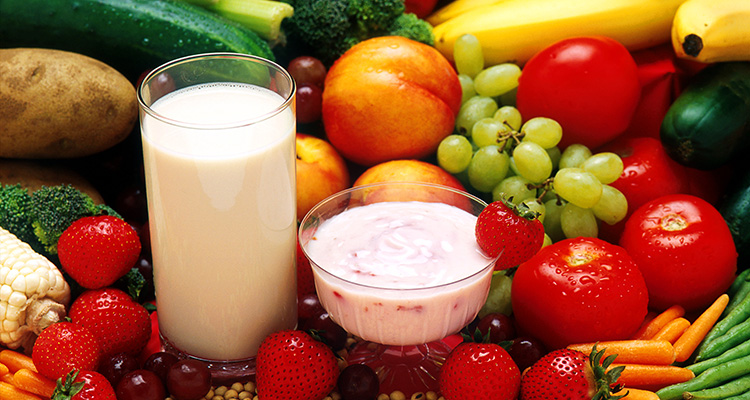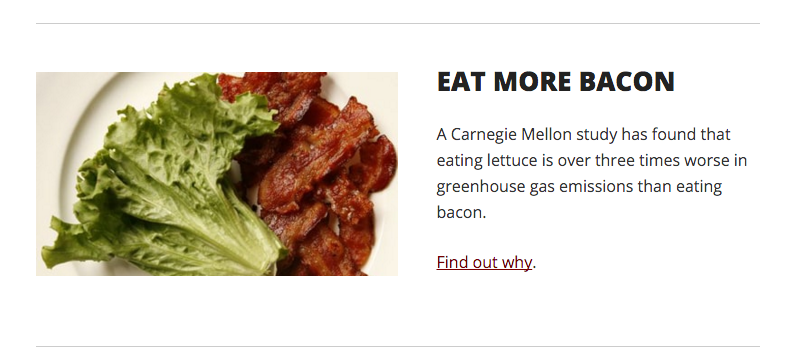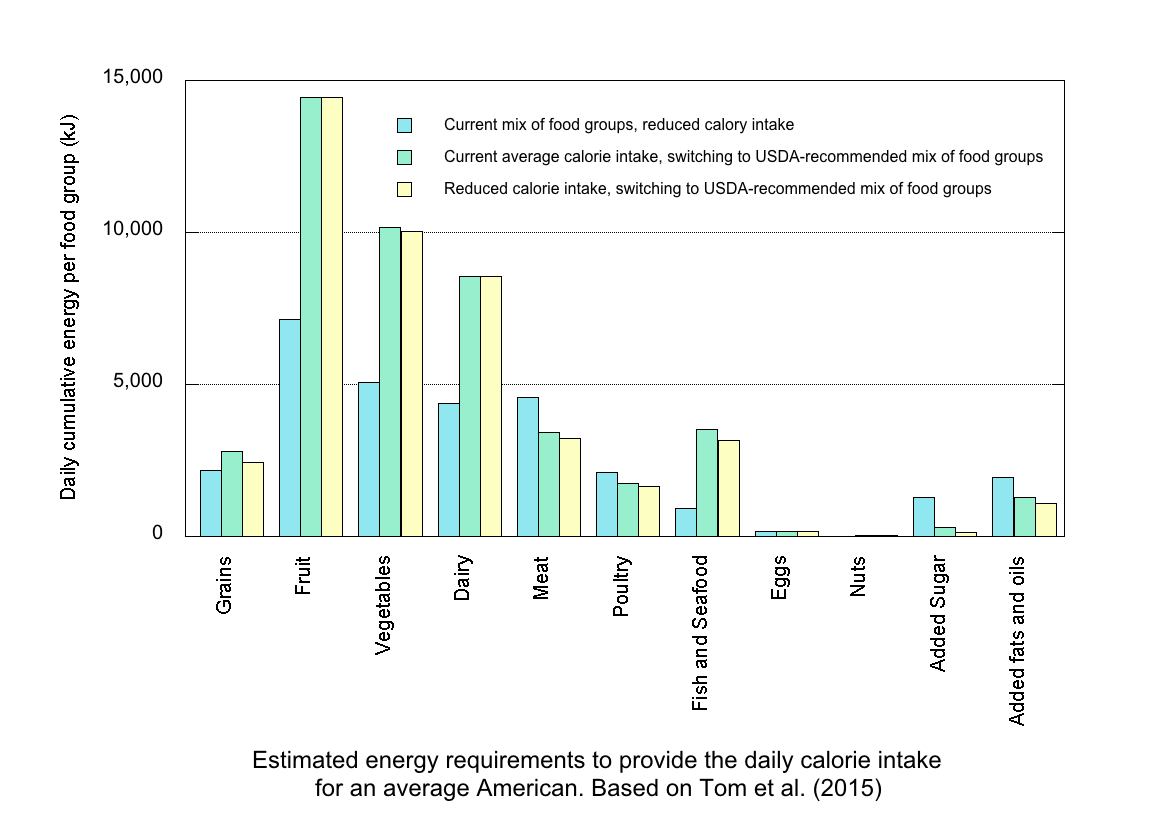Carnegie Mellon University had an eye-catching headline on its news feed this morning:
The teaser linked to a press release that stated
VEGETARIAN AND “HEALTHY” DIETS COULD BE MORE HARMFUL TO THE ENVIRONMENT
The press release was based on research just published by Michelle Tom and colleagues in the journal Environment, Systems and Decisions. It explained how, contrary to what you might think, shifting away from a meat-heavy typical American diet to one with less meat, and more fruit and veg could be bad for the environment.
So much so that
“eating the recommended “healthier” foods — a mix of fruits, vegetables, dairy and seafood — increased the environmental impact in all three categories: Energy use went up by 38 percent, water use by 10 percent and GHG emissions by 6 percent.”
Given the complex interplay between food and health, this emphasis on equating “healthy” eating to environmental harm worried me – especially when the headline morphed into
“Vegetarian and ‘healthy’ diets are more harmful to the environment”
(my emphasis) at Science Daily.
Delving into the paper itself, the analysis is actually quite robust.
The authors looked at current average caloric intakes in the US, and then developed three calorie intake scenarios:
A) Keeping the same mix of foods, but reducing overall calories;
B) Keeping the daily calories the same, but shifting to a USDA-recommended mix of foods; and
C) both reducing calories and shifting to a USDA-recommended mix of foods.
To make things more representative, their analysis included an estimate of the amount of food that’s wasted in the US each day in each food category.
They then meticulously estimated the energy, blue water use (fresh water needed to produce food), and greenhouse gas emissions associated with each calorie within each food group.
And this is where things get unexpected. It’s pretty widely known – or at least assumed – that beef (for instance) takes a massive toll on the environment for each pound that ends up on the dinner plate. Yet the end product is calorie-rich. Fruit on the other hand have a lower impact per item – but also typically contain less calories per pound.
Because of this, it turns out that – in this analysis at least – the higher environmental impact per calorie consumed comes from fruit (click on the plot below to see it full size).
So far so good. But there are two massive caveats to the research that, while not undermining the study, bring into serious question the associated press release.
First, a healthy diet is about far more than just calories. In fact, basing your diet on calories alone – and forgetting everything else you need to stay healthy – is likely to lead to an early death. As well as diseases that directly result from nutritional deficiencies, imbalanced diets are critical to the development and progression of chronic diseases that include heart disease and diabetes.
Because of this, headlines from academic institutions that tritely shout out “eat more bacon”, and neglect to mention the importance of a balanced diet on health, verge toward the irresponsible.
Second, the study is based on sweeping generalizations in estimating the environmental impact per calorie for fruit and vegetables. Most importantly, it does not directly address the massive changes to environmental impacts that are potentially possible through innovative agricultural approaches, efficient preserving, storage and transportation, local production, and waste reduction.
These all have the potential to modify the sustainability of healthy eating habits.
Rather than indicating that healthy diets are more harmful to the environment and encouraging people to eat more meat – an extrapolation that still frustrates the public health expert inside me – the study provides a framework within which we can begin to develop food practices that are both healthy and environmentally sustainable.
In other words, the question “are vegetarian diets more harmful to the environment”, while being great click bait, is the wrong question.
Instead, we should be asking “how can healthy diets be made more environmentally sustainable”.
Tom and colleagues’ research certainly helps here. Sadly, Carnegie Mellon’s press release does not.
Feature image: “Soy-whey-protein-diet” by Peggy Greb, USDA ARS. Source: Wikimedia (public domain image)




Hi Andrew, thanks for this review – a very interesting topic! Did the researchers include all inputs in producing meat (including growing/producing the animal feed? what about addressing the animal waste? yes, some of this is used as fertilizer, but in some cases not – and it needs to be transported as well). It would also be interesting to see the actual breakdown between cattle vs. pork/chicken and which vegetables/fruits are pushing that environmental impact up (lettuce has very few calories so if you compare directly to beef yes, that it is a lot of lettuce that needs to be grown/transported – which I think was what you were getting at – vs lentils? chickpeas? etc). Big topic and good to see researchers looking into it. I agree though that newer produce farming methods are improving their efficiency, especially in parts of the world with water shortages etc, which is a trend that will continue globally.
Hi Tom
The researchers used multiple estimates of energy, water and GHG impact of producing and eating meat. Not sure whether all aspects were covered, but a lot were